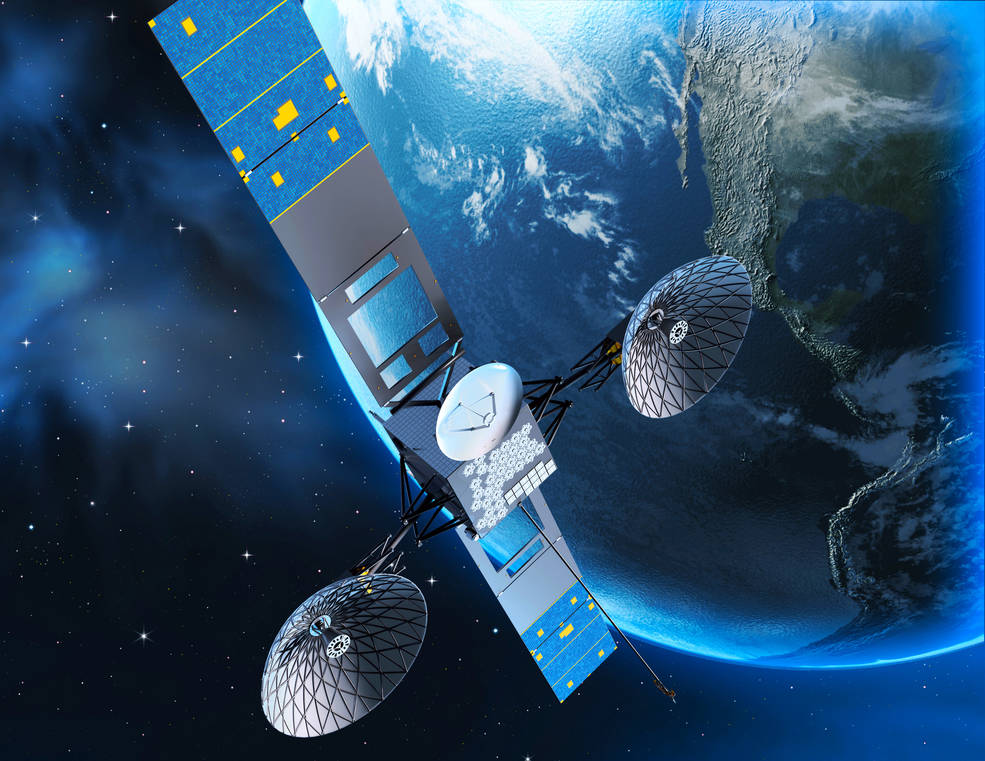Latest News

An artist rendering of a NASA Tracking and Data Relay Satellite (TDRS) in orbit. Photo: NASA
NASA is working with six American satellite communications companies to develop commercial near-Earth space communication services. On Wednesday, the agency awarded $278.5 million in contracts to Inmarsat Government, Kuiper Government Solutions, SES Government Solutions, SpaceX, Telesat U.S. Services, and Viasat.
This Communications Services Project (CSP) will develop high-rate and high-capacity two-way communications to replace NASA’s aging Tracking and Data Relay Satellite (TDRS) constellation, which provides information relay services to the International Space Station, Hubble Space Telescope, and other missions. The resulting satcom systems will be designed to serve both NASA mission requirements and commercial customers.
NASA is pursuing a similar model with commercial providers used in the commercial cargo and commercial crew programs, which the agency said this approach allows it to focus resources on deep exploration and science missions. The companies are expected to match or exceed NASA’s contributions over a five-year development and demonstration period.
NASA expects the companies to complete technology development and in-space demonstrations by 2025. The agency intends to seek multiple long-term contracts to acquire services for near-Earth operations by 2030, while phasing out its own systems.
“By using funded Space Act Agreements, we’re able to stimulate industry to demonstrate end-to-end capability leading to operational service,” said Eli Naffah, CSP project manager at NASA’s Glenn Research Center. “The flight demonstrations are risk reduction activities that will develop multiple capabilities and will provide operational concepts, performance validation, and acquisition models needed to plan the future acquisition of commercial services for each class of NASA missions.”
All of the proposals will provides satcom services to spacecraft in LEO. SpaceX received the largest award at $69.95 million. Its proposed approach is an optical Low-Earth Orbit (LEO) relay network for high-rate communications.
Kuiper Government Solutions (KGS), an Amazon subsidiary, received the second-largest award at $67 million for its proposal for an optical LEO relay network for high- and- low-rate communications.
Inmarsat Government was awarded $28.6 million for a proposed commercial radio frequency (RF) Geostationary Orbit (GEO) L-band relay network for low-rate satcom services. In late 2020, Inmarsat demonstrated an inter-satellite data relay system in partnership with Addvalue, tasking a LEO satellite via an Inmarsat GEO satellite.
SES Government Solutions was awarded $28.96 million for an approach with RF Geostationary C-band and Medium-Earth Orbit (MEO) Ka-band relay networks for high- and- low-rate communications.
Telesat U.S. Services was awarded $30.65 million for an RF Geostationary C-band and a LEO Ka-band relay networks for high- and- low-rate communications.
And Viasat was awarded $53.3 million for its proposed RF Geostationary Ka-band relay network offering high- and low-rate communications.
Viasat recently shared details about an RTE Space Relay service on a Via Satellite webinar. Aaron Hawkins, director of Viasat Real Time Earth. Hawkins said the RTE Space Relay service uses the same technology that Viasat uses to track planes for in-flight connectivity (IFC). It will use the ViaSat-3 constellation to relay data from LEO satellites to Viasat ground stations.
Let’s say you’re flying a high-rate, Ka-band mission, where you downlink over our Sweden station,” Hawkins said describing the service. “Let’s say you pass over something else where you really need to get that information directly to your end user. You can relay that over the ViaSat-3 satellite and get it to the ground almost as it’s happening. Now the long leg is not waiting for your next pass, it’s however long it takes to process that data.”
Viasat expects the service to be operational by the end of 2023
Get the latest Via Satellite news!
Subscribe Now